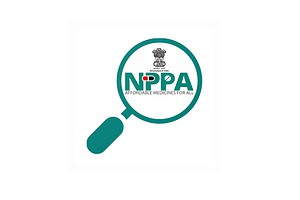Last Updated on September 9, 2023 by The Health Master
Eye Drops Packaging: Opaque Bottles
In an effort to prevent microbial contamination, pharmaceutical companies may be required to transition from using transparent plastic bottles to opaque ones for packaging eye drops.
India’s drug regulator is contemplating amendments to the drug rules governing eye drop packaging, according to sources familiar with the matter.
Need for Packaging Change to Ensure Contamination-Free Eye Drops:
According to an anonymous source, bacterial contamination in ophthalmic solution bottles is frequently reported, necessitating a revision in packaging to maintain sterility.
To address this concern, the Drugs Consultative Committee (DCC), a panel of experts operating under the Drugs Controller General of India (DCGI), recently discussed the issue and will soon reach a final decision.
Transparent Bottles: An Alternative Proposal:
Currently, non-transparent plastic bottles are commonly used by pharmaceutical companies, which are susceptible to contamination.
The DCC has recommended employing transparent bottles as a means to ensure they remain uncontaminated.
Feasibility Assessment and Industry Collaboration:
Before making a definitive decision on this matter, the drug regulatory authority intends to engage in discussions with the pharmaceutical industry to evaluate the feasibility of transitioning to opaque bottles.
This collaborative approach aims to gather input and perspectives from relevant stakeholders.
Enhancing Product Performance and Safety:
Recent complaints of contamination have highlighted the criticality of ophthalmic drug product packaging in terms of product performance and safety, surpassing the importance of packaging used for solid oral drug dosage forms.
Consequently, the topic was brought forth for discussion and consideration.
Contamination Risks and Transparency Concerns:
It has been observed that bacteria are more likely to contaminate the bottle tip rather than the solution within eye drop bottles.
Due to the lack of transparency, patients often use contaminated eye drops without realizing it. Addressing this issue requires a shift from the current non-transparent packaging.
Transitioning to Single-Dose Plastic Bottles:
While traditional glass bottles with rubber teat droppers were previously used by companies, the prevalence of single-dose plastic bottles has increased significantly in recent times.
Conclusion:
The potential switch to opaque bottles for eye drops packaging represents a proactive step by pharmaceutical companies and regulators to ensure product safety and minimize contamination risks.
By taking this measure, the industry aims to enhance the overall quality and efficacy of ophthalmic solutions, benefiting patients in the process.
Licensing procedure for manufacturing of Drugs
Procedure to obtain license for manufacturing of Cosmetics
Procedure to obtain license for manufacturing of Homoeopathic Medicines
Procedure to obtain license for manufacturing of Medical Devices
Procedure to obtain License to Manufacture drugs for testing and analysis purposes
Procedure to obtain license for Commercial Testing Laboratories
Latest Notifications: D&C Rules 1945
Latest Notifications: D&C Act 1940
Latest Notifications: Cosmetics
Latest Notifications: Medical Devices
Latest Notifications: Blood Centre / Bank
Latest Notifications: Banned Drugs
NPPA revised Ceiling price of 15 scheduled formulations: June 2023
USFDA gives nod for Esomeprazole Magnesium Suspension
Govt gives nod to sale of 2 rational FDC drugs
NPPA fixed retail price of 23 formulations: June 2023
Govt notifies MDR amendment for State Medical Devices Testing Laboratories
Cosmetics Testing in India: A Comprehensive Guide
Hyderabad Pharma City to become world’s largest pharma cluster: Minister
Drug alert: This Typhoid Vaccine fails Quality Test – CDSCO
Airlocks in the Pharma Industry: An essential component
Line clearance and maintenance in manufacturing: A comprehensive guide
For informative videos by The Health Master, click on the below YouTube icon:
For informative videos on Medical Store / Pharmacy, click on the below YouTube icon:
For informative videos on the news regarding Pharma / Medical Devices / Cosmetics / Homoeopathy etc., click on the below YouTube icon:
For informative videos on consumer awareness, click on the below YouTube icon:












